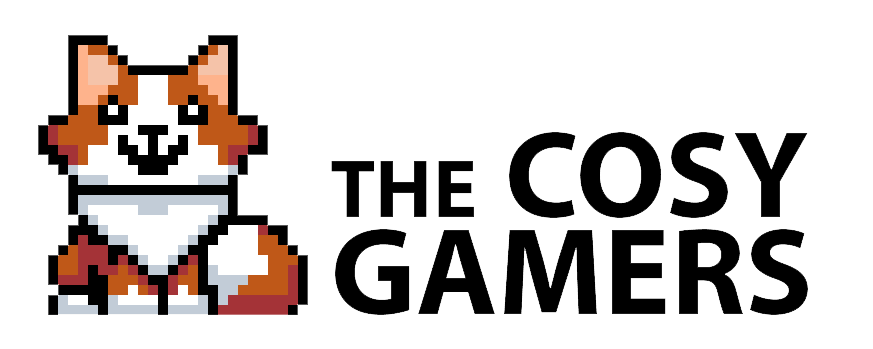Cattle Country preview: Giddy up, we’re gettin’ cosy
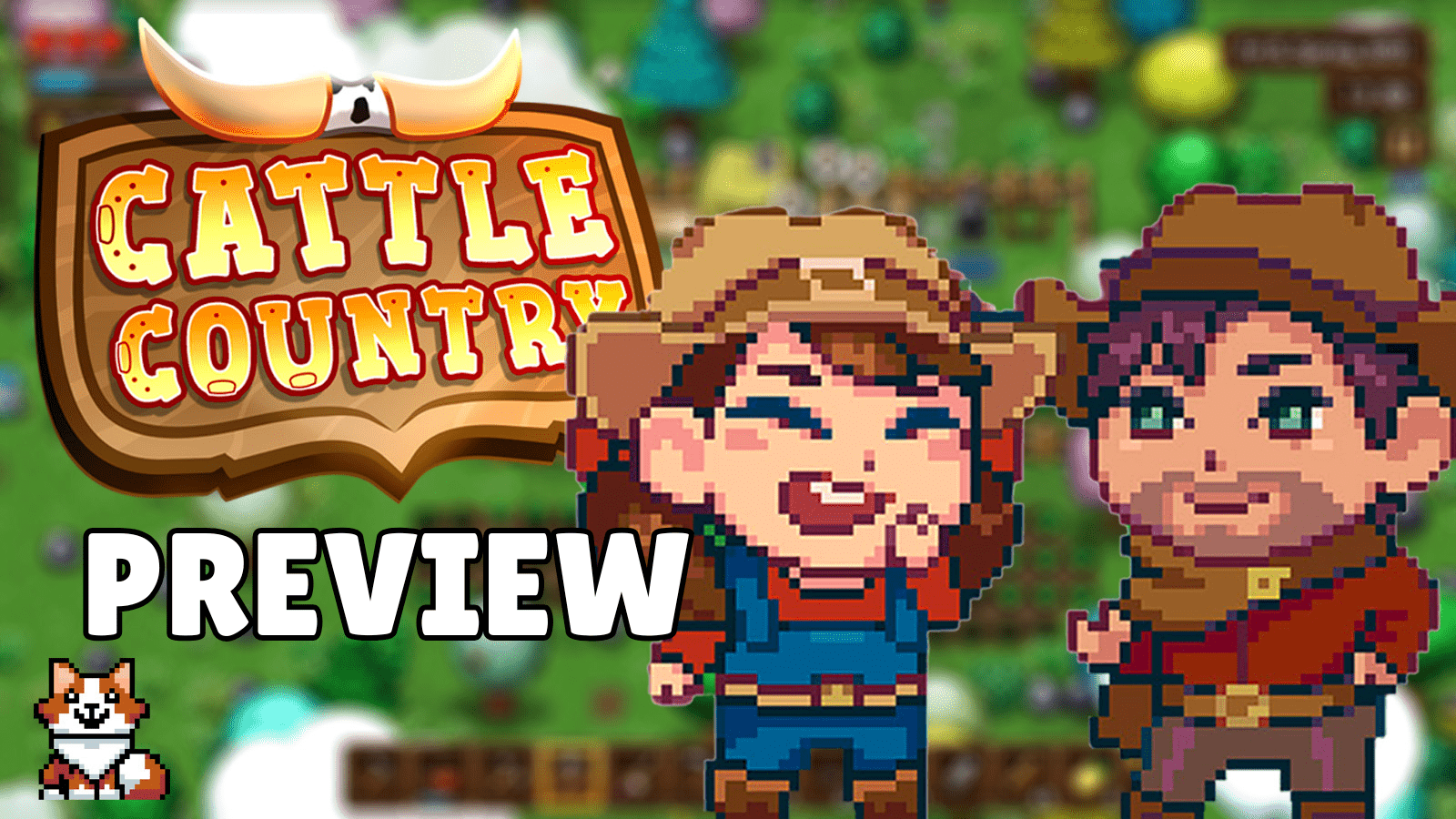
The cosy farming sim genre is thriving, with dozens of charming pixelated titles releasing each year. However, many struggle to stand out. While Cattle Country largely follows familiar footsteps, its Wild West setting and fresh approach to mining help set it apart.
If you’re familiar with the genre, you’ll likely recognise the premise: You’re a customisable character who heads West to start a new life as a farmer. You grow and cultivate crops, tend to animals, form bonds with the locals, and can spend time fishing, cooking, and mining.
I played around four hours of Cattle Country’s latest demo ahead of Steam Next Fest, playing through the game’s opening week twice, and while there are a few rough edges, I had a rootin’ tootin’ good time.
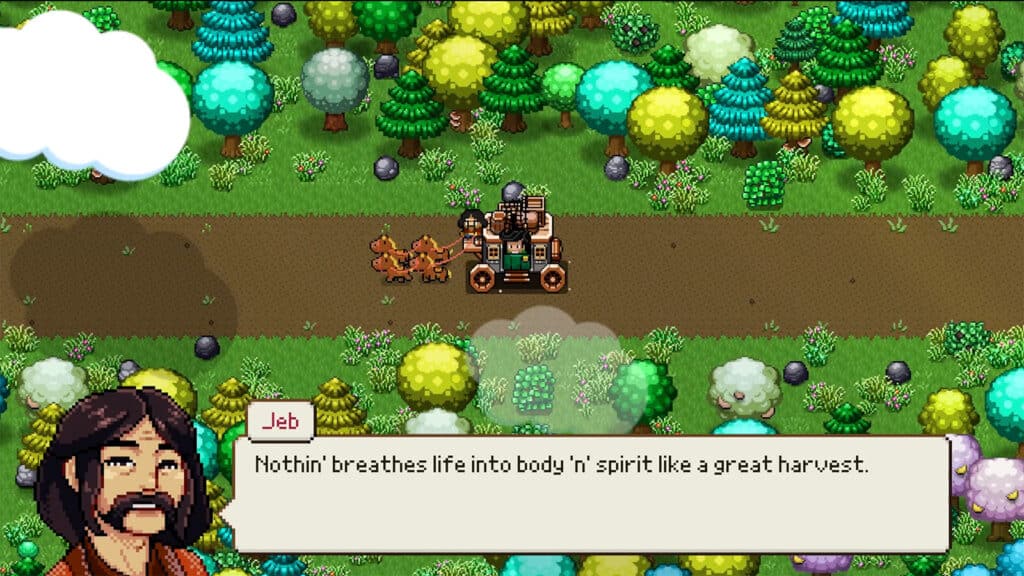
Saddling up for a new life
Character creation was my first stop on the journey west, and while the demo offered a fair selection of hair and outfit options, it felt a little limited when it came to skin tones and hair colours. But I was still able to recreate a cute pixellated cowboy. After naming my town and ranch, none other than Arthur Morgan himself – of Red Dead Redemption 2 fame – set the scene with a narration introducing me to the Wild West.
Arriving in Cattle Country’s town, I was greeted by its mayor, Archibald, before being led to my ranch. Fortunately, the demo provided a well-equipped setup, including a stable and horse, a tent that acted as my home, a workbench, a shipping box, and several processing stations to use with my collected produce. A variety of crops, including carrots, wheat, strawberries, and hops, were already planted and a few days off from harvest.

Wasting no time, Archibald handed me my tools and set me up with some classic tasks: harvest a crop, cook a dish, and meet the town’s residents. Within a few in-game days, I had harvested and sold my pre-planted crops, and had chopped down an apple tree and roasted an apple in my tent’s oven. Cooking looked promising, with dozens of recipes requiring various ingredients, hinting at a deep culinary system that paired wonderfully with the game’s mining and energy systems.
Farming itself felt familiar. With the many seeds provided in the demo, I quickly tiled uneven patches of land, planted crops, watered them daily, and harvested them when ready. One minor issue I noticed with the farming and general interaction was the targeting system. Using my Xbox controller felt clunky when trying to interact with the right crop, person or machine, whereas mouse and keyboard offered a smoother experience with further reach for interactions.
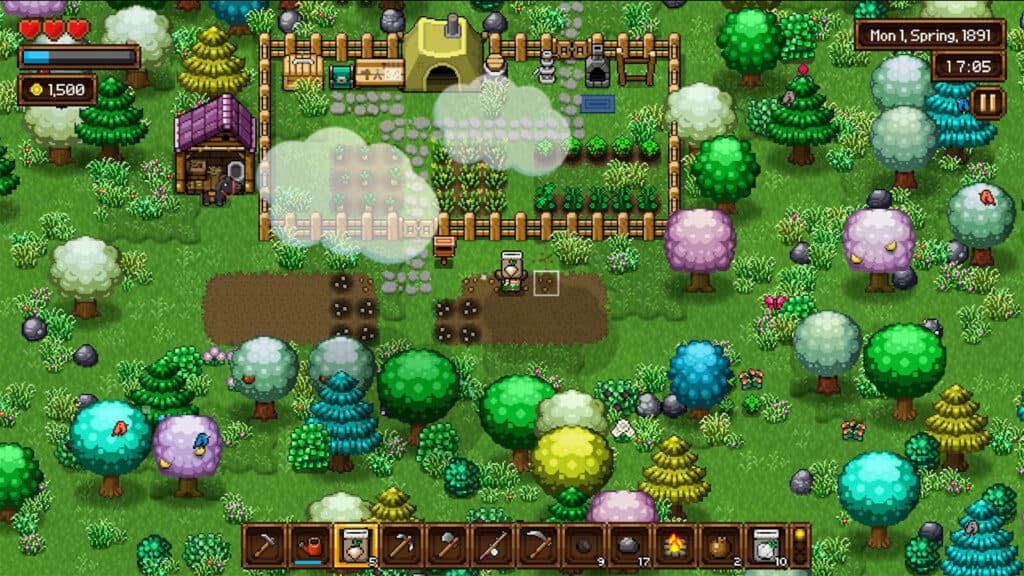
Exploring a Western town
Eventually, I set off to explore the town. Unlike the tightly packed towns of Stardew Valley and Coral Island, Cattle Country embraces its Western setting by spreading its buildings, like a general store, saloon, bank, post office, and sheriff’s office, across a vast landscape of twisting and turning pathways hidden amongst thickets and a bustling range of animals.
While this design fits the game’s 1800s era, it did make the town feel empty. The world map wasn’t labeled, making navigation tricky when trying to find the right shop or building, and despite spotting NPCs going about their daily tasks, like the postman delivering mail and business owners moving between locations, which I loved, something felt missing. A farming sim’s community is often its heart, where players form bonds, friendships, and even romances, but in Cattle Country, the town seemed to lack that. Whether that was because it’s early game or I didn’t spend enough time interacting with the characters, I’m not sure.
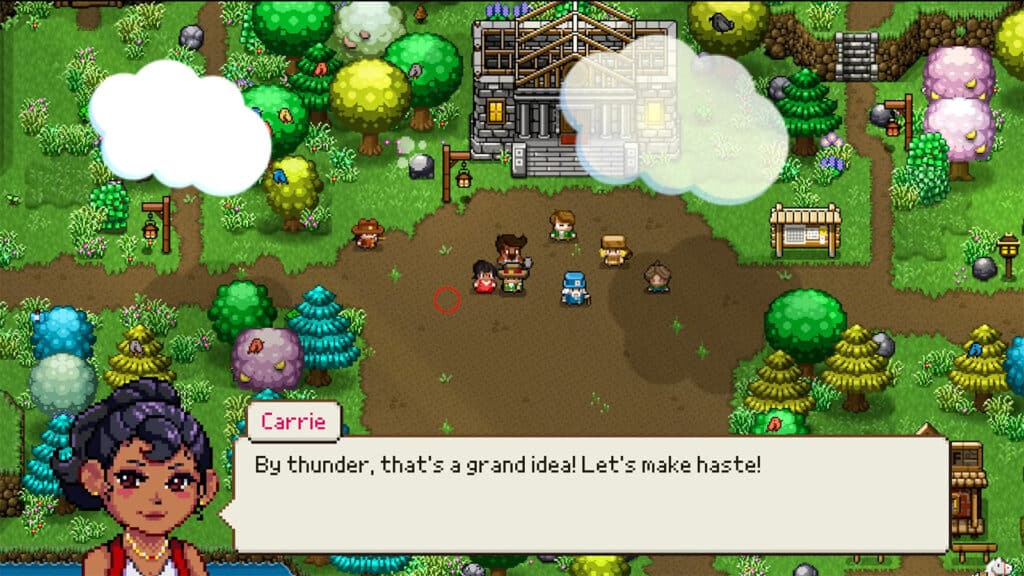
Characters were easy to befriend, but few left much of an impression. A group of six business owners stood outside what looked like a community centre doing nothing for most of the demo, which was odd. What I did like was, at the beginning of both playthroughs, was that I could interact with members of this group and select to join them, which triggered fun events.
When I selected to visit Carrie at the Saloon, I was given a cutscene between two customers discussing how the building was haunted. They asked for my opinion before disagreeing with the barmaid and then leaving. Alone, the barmaid asked whether I was interested in investigating the haunting, which I agreed to. Similarly, choosing to visit the bank triggered a cutscene wherein the banker voiced disagreement with a client while trying to help him. Another watching townsperson suggested the banker was up to something, and asked me whether she should investigate him. Naturally, I said yes.
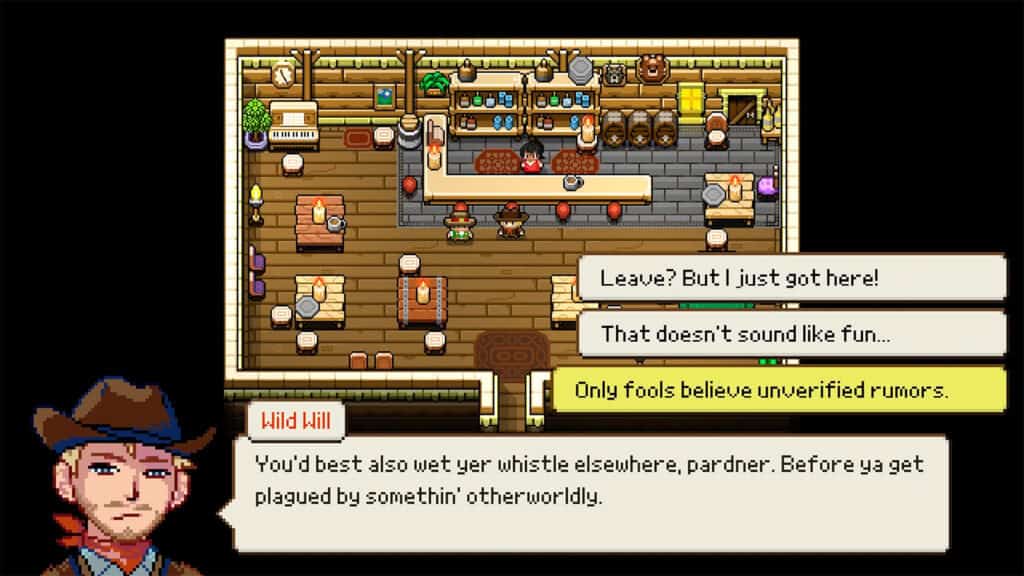
I’m not sure where these events will go and how they will progress, possibly by increasing each characters’ friendship. Regardless, these interactions gave me the spark I needed to care and invest into a few of the game’s characters, and I’m looking forward to seeing each character’s event if they’re similar to the two I’ve already experienced.
Uncharted waters and dark mines
When I eventually decided to take a break from farming, socialising, and exploring, I tried my hand at fishing. Casting my rod into the river beside my ranch, I was met with a simple yet satisfying mini-game. A horizontal bar appeared on-screen, featuring a green rectangle (representing the fish) and two yellow squares. A silver marker moved back and forth across the bar, and I had to press a button or click my mouse when it aligned with the green zone. Some fish required multiple successful presses, while missing and landing in the yellow zone resulted in failure but with a chance to try again.
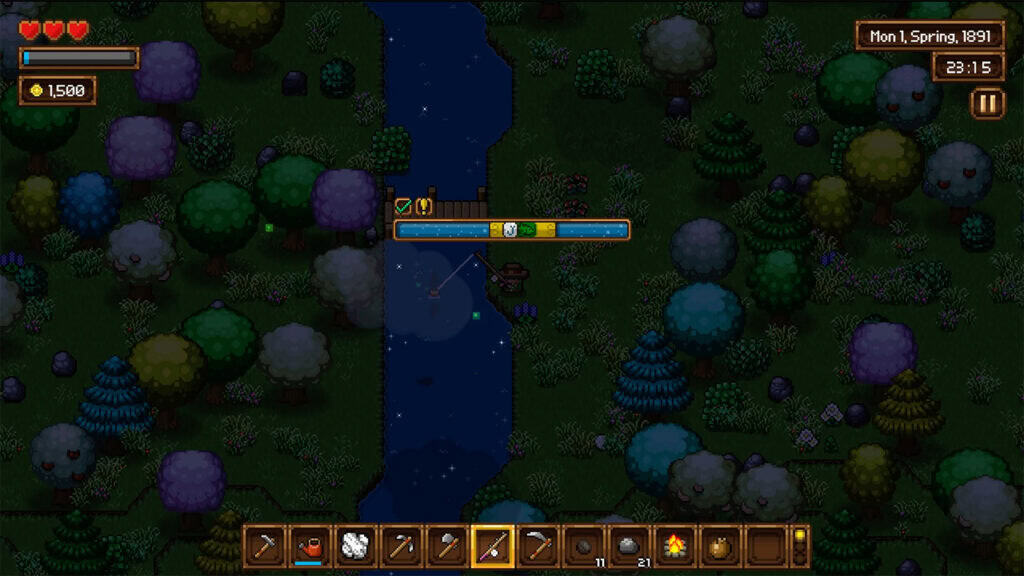
The fishing mechanic is similar to those from other farming sims, but far more forgiving. Unlike in other games where one mistake usually means losing the fish, Cattle Country gives you an additional chance, making it a more accessible and enjoyable experience. I found myself preferring Cattle Country’s mini-game for these reasons, transforming a pain of a mini-game into something fun.
Mining is a staple in farm sims, and it was a standout feature in Cattle Country. The game reinvents the mining mechanic with a clever 2D descent system. Instead of exploring floors, you break through layers of stone, dirt, and ore, carefully picking your way downward level by level. A range of tools were provided to help me; torches to light the dark depths of the mine, ladders that could be erected or dropped to allow for climbing, and planks that could be used to stretch out over large gaps.
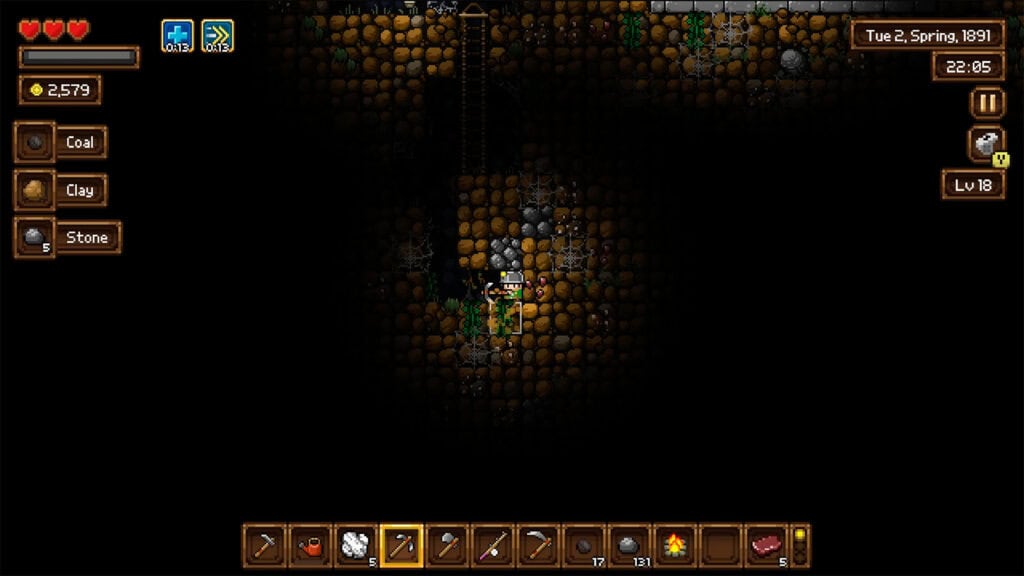
Mining felt more puzzle-like than traditional farming sim. At the end of my second playthough, I managed to reach levels in the high 170s after breaking into an area that had already been excavated. My goal was to hit level 25, then 50, then 100, and then 250. While I felt there were a lack of rewards for hitting milestones – other farm sims give you goodies for every so many levels completed – I did manage to pick up a lot of ore and crafting materials which I put to good use on my farm. I was frequently warned about how dangerous the mines were, but encountered no said dangers on any of the 170+ levels I explored.
A whole lot of potential
After spending several hours with Cattle Country, it’s clear that Castle Pixel have established a solid foundation. The game’s Western aesthetic, inventive mining, and relaxed fishing system are all excellent, although I do feel like there are some kinks – the lack of depth and warmth to the town, for example – to smooth out.
Cattle Country’s additional mechanics like bandits that weren’t present in my demo look equally promising, and if Castle Pixel can deepen its world and land a hit with its NPC events and relationships, this could definitely be a game worth saddling up for.
Cattle Country will be released for PlayStation 5, Xbox Series consoles, Nintendo Switch, and PC via Steam in 2025.
